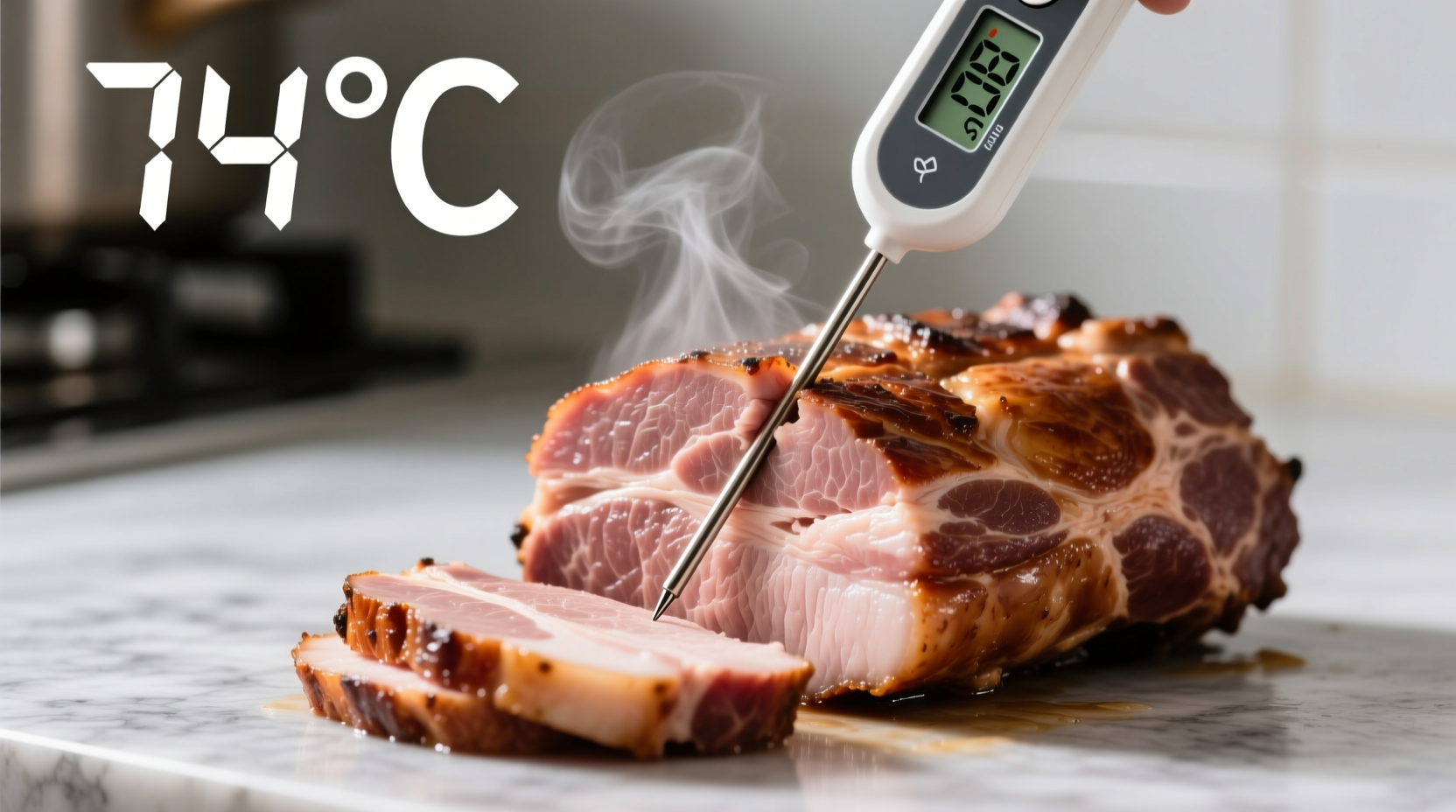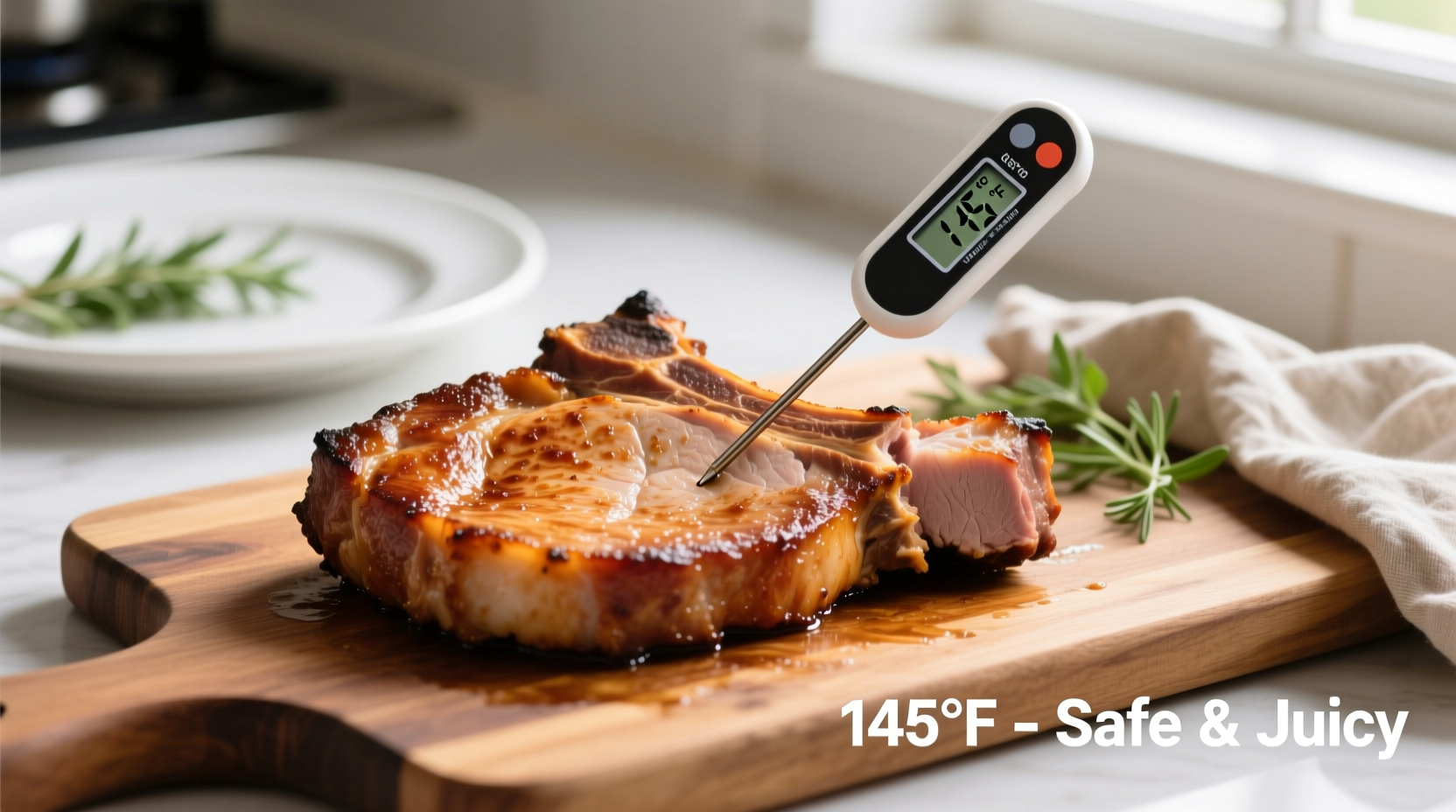For decades, pork was cooked until well done out of fear of trichinosis. Modern farming practices have virtually eliminated this concern, allowing us to enjoy pork at safe yet tender temperatures. Understanding the precise final cooking temperature for pork isn't just about safety—it's the difference between succulent, flavorful meat and dry, overcooked disappointment.
Why Pork Temperature Matters for Food Safety
Proper cooking temperature destroys harmful bacteria like Salmonella, Staphylococcus aureus, and E. coli that may be present in raw pork. While trichinosis was once the primary concern with undercooked pork, today's main risks come from these common pathogens.
The USDA's Food Safety and Inspection Service (FSIS) confirms that cooking pork to 145°F with a 3-minute rest time effectively eliminates pathogens while maintaining quality. This recommendation, updated in 2011, reflects improved food safety standards and modern farming practices.
| Pork Type | Safe Minimum Internal Temperature | Rest Time |
|---|---|---|
| Whole cuts (roasts, chops, tenderloin) | 145°F (62.8°C) | 3 minutes |
| Ground pork | 160°F (71.1°C) | No rest required |
| Pre-cooked ham (to reheat) | 140°F (60°C) | No rest required |
This temperature standard comes directly from the USDA Food Safety and Inspection Service, which regularly updates guidelines based on the latest food safety research. The FDA Food Code also aligns with these temperature recommendations for commercial food establishments.
How to Accurately Measure Pork Temperature
Using a reliable meat thermometer is non-negotiable for proper temperature measurement. Digital instant-read thermometers provide the most accurate results for home cooks. When checking temperature:
- Insert the probe into the thickest part of the meat, avoiding bone, fat, or gristle
- For roasts, check multiple spots as heat distribution can be uneven
- Wait for the temperature reading to stabilize (usually 10-15 seconds)
- Sanitize your thermometer between uses to prevent cross-contamination
Many experienced cooks make the mistake of relying on visual cues like meat color or juice clarity. The USDA explicitly states that color is not a reliable indicator of doneness. Pork can appear slightly pink at 145°F and still be perfectly safe, while overcooked pork can sometimes retain a pinkish hue due to curing compounds or myoglobin reactions.

The Critical Resting Period Explained
That 3-minute rest time after removing pork from heat serves two crucial purposes:
- Temperature Equilibrium: Heat continues to distribute through the meat, raising the internal temperature 5-10 degrees (carryover cooking)
- Juice Retention: Muscle fibers relax during resting, allowing juices to redistribute rather than pour out when cut
Cover your pork loosely with foil during resting to maintain warmth without trapping too much steam. For larger cuts like pork shoulder, extend resting time to 10-15 minutes for optimal results.
Special Considerations for Different Pork Cuts
While the 145°F standard applies to most whole-muscle pork cuts, certain preparations require different approaches:
- Pork shoulder (for pulled pork): Cook to 195-205°F for proper shredding texture
- Pork ribs: 190-203°F for tender, fall-off-the-bone results
- Smoked pork: Follow the same temperature guidelines but account for longer cooking times
- Ground pork products: Always cook to 160°F as grinding distributes potential pathogens throughout
The Centers for Disease Control and Prevention emphasizes that ground meats require higher temperatures because the grinding process spreads bacteria from the surface throughout the product.
Common Temperature Mistakes to Avoid
Even experienced cooks make these temperature-related errors:
- Testing too early: Opening the oven or grill frequently causes temperature fluctuations
- Incorrect probe placement: Measuring near bone gives falsely high readings
- Ignoring carryover cooking: Removing meat at target temperature rather than 5 degrees below
- Using unreliable thermometers: Old dial thermometers can be off by 10+ degrees
For best results, remove pork from heat when it reaches 140°F, then let it rest to reach the final 145°F. This prevents overshooting your target temperature.
Verifying Your Thermometer Accuracy
Regular calibration ensures your temperature readings remain reliable:
- Fill a glass with ice and add cold water
- Stir well and let sit for 3 minutes
- Insert thermometer probe into the ice water
- It should read 32°F (0°C)
If your thermometer is off by more than 2 degrees, replace it or adjust your readings accordingly. The National Center for Home Food Preservation provides detailed guidance on proper thermometer use and calibration.
International Temperature Standards Comparison
While the USDA standard is 145°F, other countries have slightly different recommendations:
- Canada: 145°F for whole cuts, 160°F for ground pork
- UK: 70°C (158°F) for 2+ minutes throughout the product
- Australia: 71°C (160°F) for immediate consumption
These minor variations reflect different risk assessment approaches, but all standards effectively eliminate pathogens when properly followed. The USDA's 145°F standard represents the current scientific consensus on the minimum safe temperature that also preserves optimal eating quality.











 浙公网安备
33010002000092号
浙公网安备
33010002000092号 浙B2-20120091-4
浙B2-20120091-4